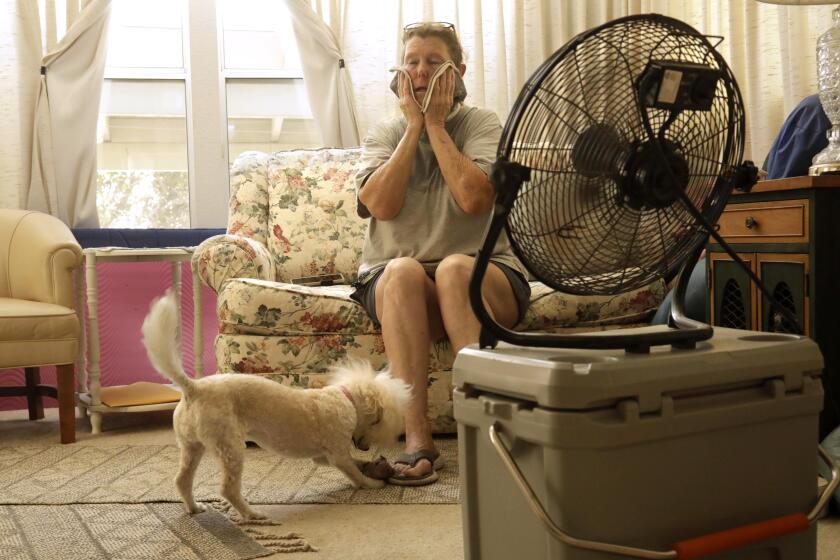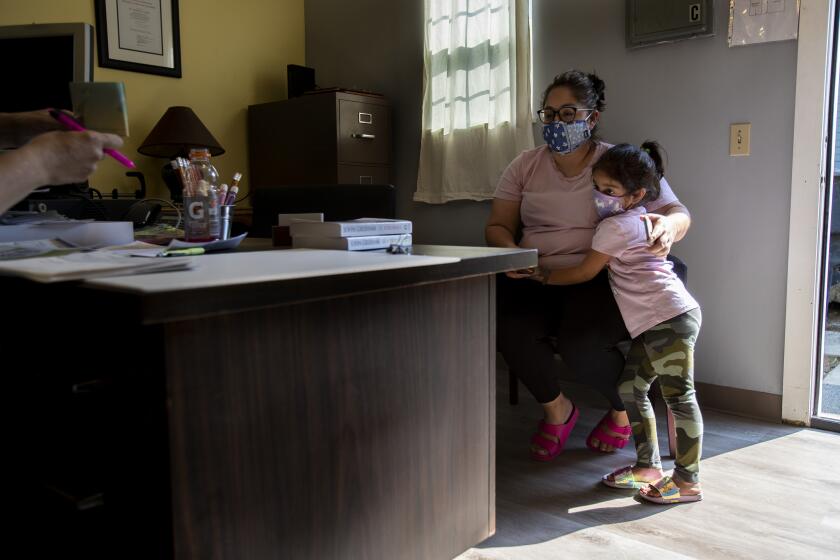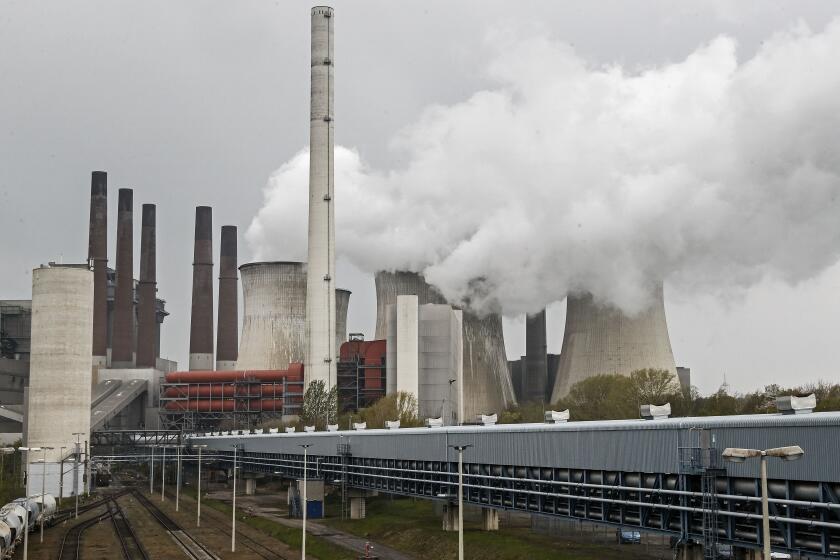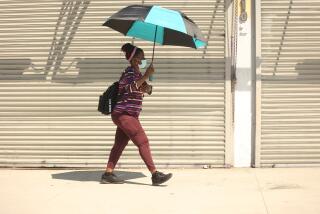Editorial: Extreme heat puts workers in danger. California needs to help them now
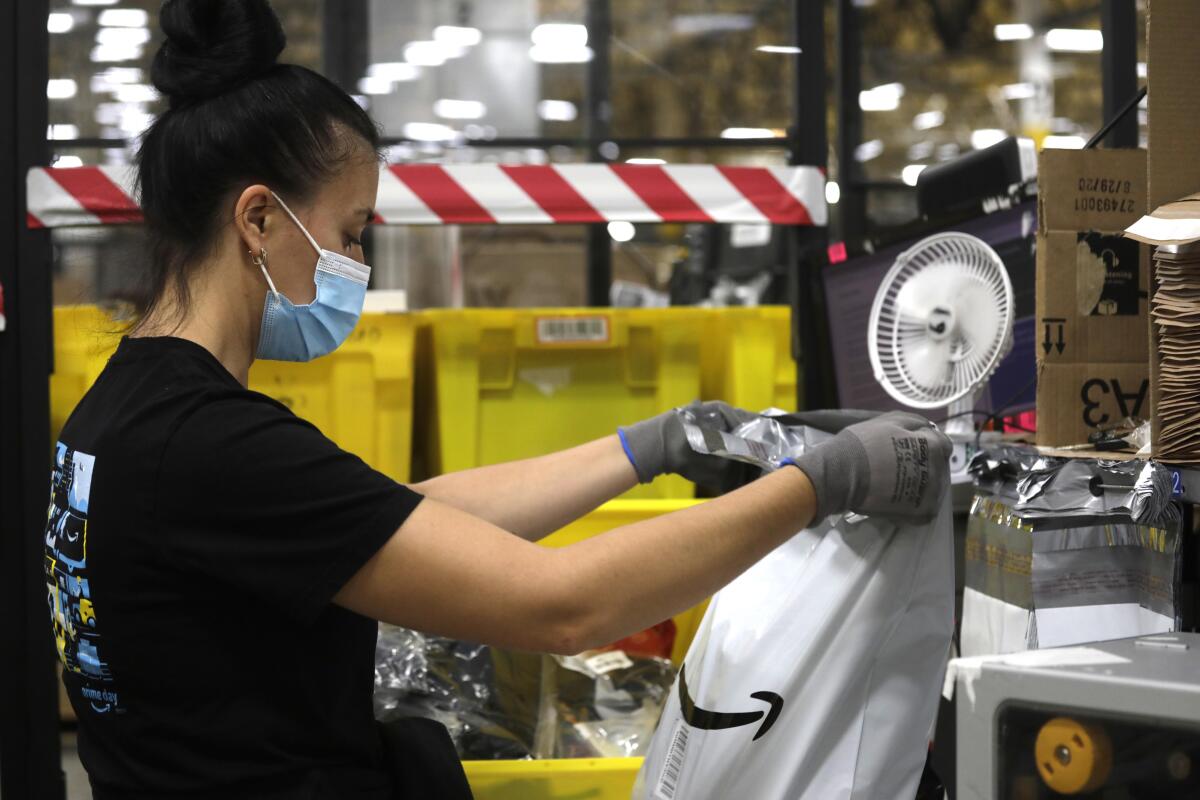
- Share via
California has suffered some of its worst heat waves on record in recent years. As climate change accelerates, few are as directly threatened as people working outdoors and in facilities without air conditioning.
Outdoor laborers, such as farmworkers and construction crews, have some protection under heat illness prevention standards California adopted nearly two decades ago requiring employers to provide drinking water, shade and rest breaks to recuperate from the heat. But more than a million other workers in largely non-air-conditioned warehouses, factories, kitchens and other workplaces remain unprotected, despite a legal deadline to have indoor heat standards in place by 2019.
Late last month the California Division of Occupational Safety and Health, or Cal/OSHA, announced it will hold a public hearing on its proposed indoor heat standards on May 18. But a decision on whether to adopt them could take months, and officials say there is no chance the rules will be in place as we approach another hot summer. That’s unacceptable. Workers need protections now.
A bill in the California Legislature would save lives during extreme heat waves by requiring dwelling units to maintain adequate cooling.
After multiple farmworkers died from heat-related causes in 2005, California rushed to adopt emergency rules to protect outdoor workers from extreme heat, and made them permanent the following year, becoming the first state in the nation to do so. But there’s been no such urgency when it comes to protecting indoor workers, even as rising temperatures collide with a boom in jobs at massive warehouse distribution centers that have been expanding rapidly in the Inland Empire, the high desert and other hot regions. Temperatures in warehouses, many of which lack air conditioning, can climb to 90 degrees or higher. Workers can become sick, dizzy or even pass out, and are sometimes sent home without medical evaluations or care.
The state’s glacial progress on indoor heat standards demonstrates a troubling lack of attention to this life-threatening hazard by Gov. Gavin Newsom’s administration. These rules should have been finalized years ago, as required under a 2016 law, and should already be in place to save lives and prevent illness and injuries during dangerous heat waves.
Greenhouse gas pollution is making heat waves more frequent, severe and long-lasting. California has suffered through deadly heat spells such as in 2020, when Woodland Hills reached 121 degrees — the highest temperature ever recorded in L.A. County — and 2022, when Sacramento reached 116 degrees, another all-time high.
Undocumented workers should not be excluded from receiving benefits when they lose their jobs considering that employers already pay $485 million into the unemployment insurance fund for them each year.
Workers’ compensation data analyzed by Cal/OSHA show that claims involving heat stress rose during the 2010s, the hottest decade on record, with the number of cases related to indoor heat exposure rising from 138 on average in 2011 to 225 in 2018. There were 20 work-related heat deaths reported in California between 2010 and 2017, seven due to indoor heat exposure. State officials acknowledge that the actual number of work-related heat illnesses, injuries and deaths is much higher because they are vastly underreported, but they estimate that the proposed indoor standards could cut the number of deaths and injuries nearly in half.
By law, Cal/OSHA was supposed to submit indoor heat standards for adoption by 2019, but is now more than four years behind. Officials have blamed repeated delays on the long and difficult rule-making process and on the COVID-19 pandemic exhausting their resources. It’s understandably a challenge to decide the level at which the human body should be expected to perform work, without making it too onerous for employers. Businesses wanted a rule that would only apply when the temperature was 95 degrees or higher, while workers’ advocates pushed for a limit of no more than 80 degrees.
The proposed heat standards would extend to indoor workers many of the same protections currently mandated for outdoor laborers, including that employers provide cool-down areas and rest breaks to prevent overheating. In a compromise, the rules would apply to facilities where the temperature exceeds 82 degrees. Employers would have to provide additional protections, such as air conditioning, swamp coolers, or protective clothing, or changes to workers’ schedules, to prevent them from working in temperatures over 87 degrees.
U.N. climate report shows we can’t just phase out oil and gas; we have to deliberately dismantle existing infrastructure, such as coal plants in China and drilling in Alaska.
California’s success in protecting workers will also depend almost entirely on how strongly the rules are enforced. With that in mind, the state should devote additional staff and resources to inspect workplaces, investigate complaints and hold employers accountable for failure to comply.
There is much more to be done. There are no nationwide workplace standards to prevent heat-related illness. The Biden administration announced in 2021 that it would begin developing such rules to protect indoor and outdoor workers. California and other states have petitioned federal officials to put in place temporary emergency standards to protect workers by this summer.
U.S. Assistant Secretary of Labor for Occupational Safety and Health Doug Parker said in a statement Friday that the Biden administration understands the urgency and need for a nationwide heat standard and also wants “to make sure our actions lead to a permanent, workable solution as soon as reasonably possible.”
But what’s preventing federal officials — and state regulators for that matter — from acting now on an emergency basis?
Extreme heat is the deadliest climate-related hazard, but its solutions are some of the most straightforward: providing cooling, water, rest and medical care. There should be no excuses for state and federal officials to get these protections across the finish line before summer arrives.
More to Read
A cure for the common opinion
Get thought-provoking perspectives with our weekly newsletter.
You may occasionally receive promotional content from the Los Angeles Times.
